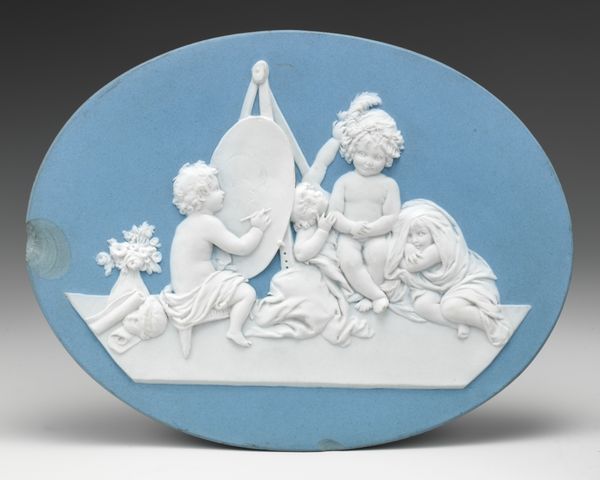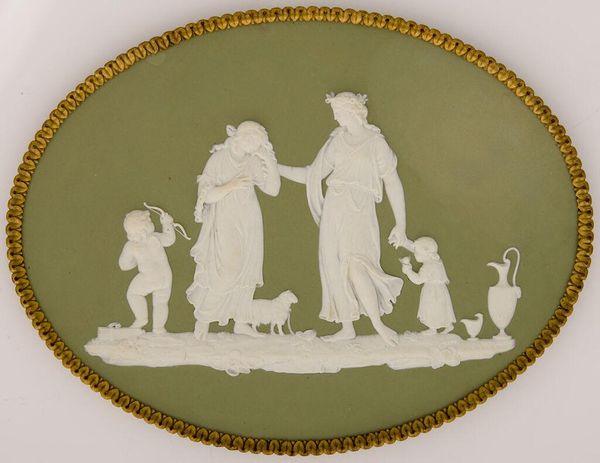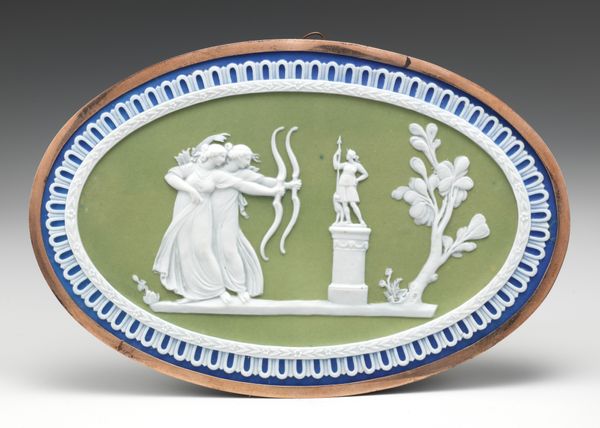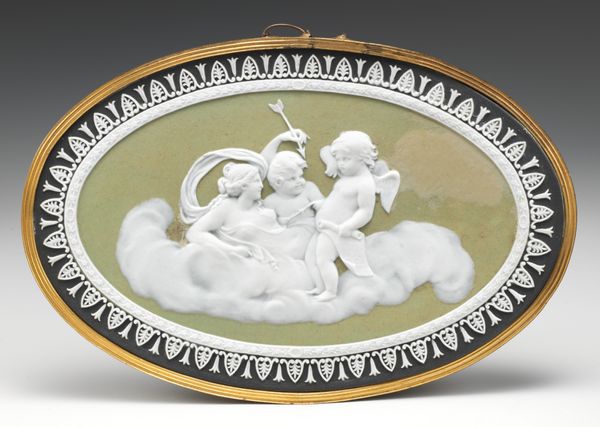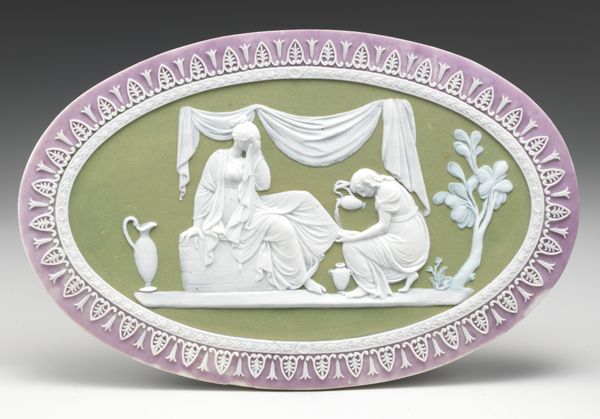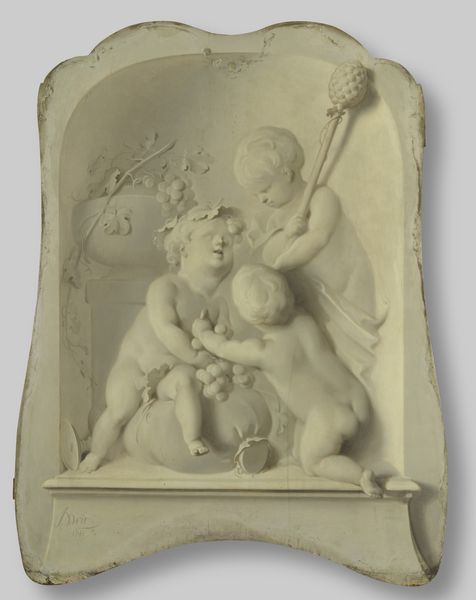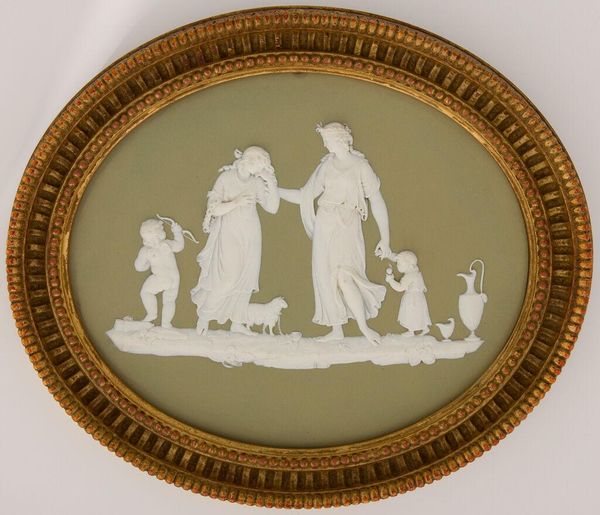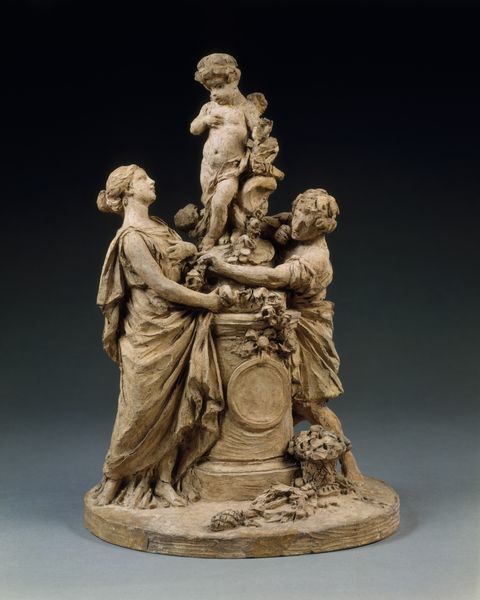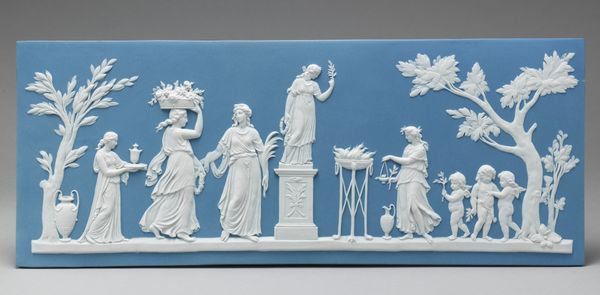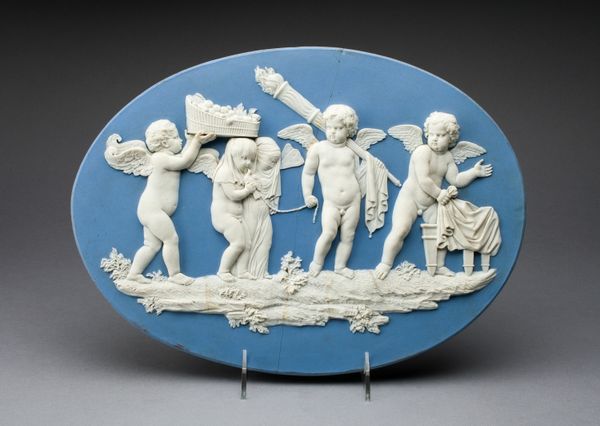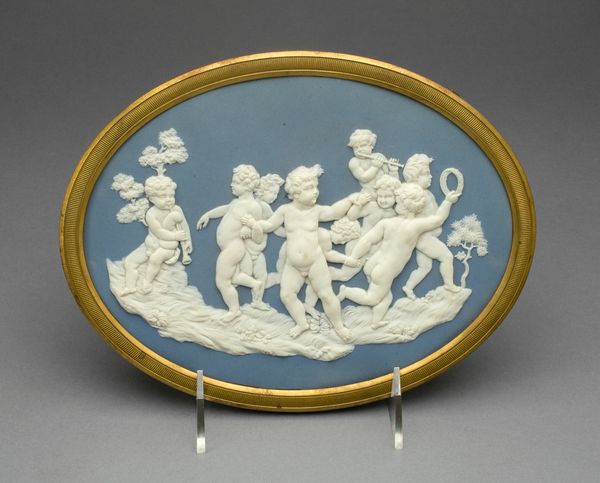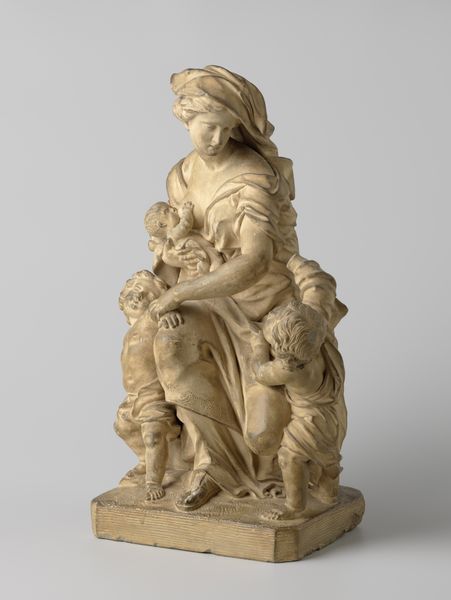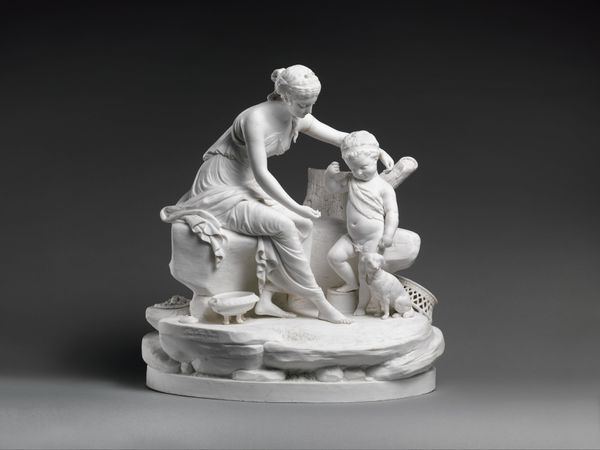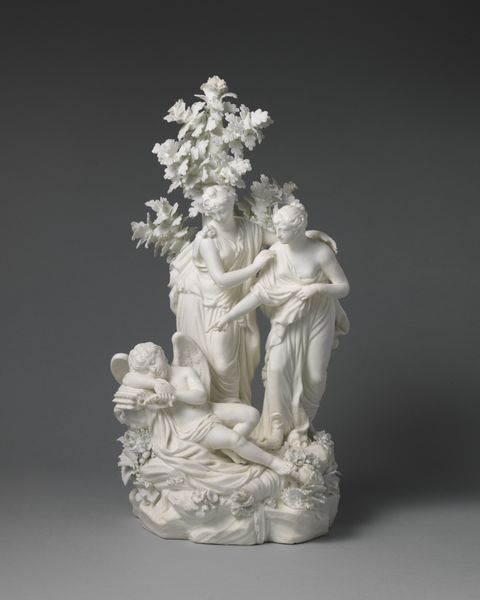
relief, ceramic, sculpture
#
neoclacissism
#
allegory
#
relief
#
ceramic
#
classical-realism
#
figuration
#
historical fashion
#
3d shape
#
sculpture
#
ceramic
#
history-painting
#
decorative-art
Dimensions: 5 × 6 7/8 in. (12.7 × 17.5 cm)
Copyright: Public Domain
Editor: So, this is "An Offering to Peace" made between 1778 and 1795 by Josiah Wedgwood. It's a ceramic relief. The pale figures against that sage green are quite striking, creating a really delicate atmosphere. What stands out to you most about it? Curator: The critical aspect of Wedgwood's work here resides in its deliberate embrace of industrial production. What was once the domain of skilled artisans is now reimagined within the framework of a burgeoning factory system. Editor: Are you saying the act of making becomes more important than the image itself? Curator: Exactly. Consider the composition and the material itself – jasperware. It was developed and marketed as a substitute for more expensive materials like marble. Wedgwood democratized art by reproducing classical imagery on a mass scale. In doing so, he expanded the availability and reshaped our relationship to luxury and consumption. The use of Neoclassical imagery isn't just aesthetic; it speaks to the period's fascination with reason, order, and progress. Editor: I see your point. So it is like this object sits at the intersection of art, industry, and consumerism. Curator: Precisely. It's a testament to how the industrial revolution transformed not only production, but also our understanding of art and its accessibility. Consider, too, the implications for labor: skilled labor versus mass-produced pieces. How might the creation of multiples alter perceptions of value and originality? Editor: I had only focused on the style, but this gives me so much more to consider about the piece and its cultural moment. Thanks for the deep dive into how material and production matter! Curator: My pleasure!
Comments
No comments
Be the first to comment and join the conversation on the ultimate creative platform.
